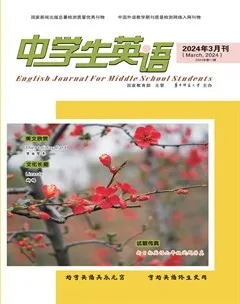World Puppetry Day世界木偶日


On every March 21st, people all over theworld celebrate the World Puppetry Day.
Puppetry can find its roots as far back as500 BC when Ancient Greeks would use a formof puppetry, but some historians believe it mightdate even further back—to 2000 BC or longer.
Puppets have often been used to not onlysimply tell stories to children, but they havebeen used as a form of theater. Whether throughhand puppets, marionettes2 or even shadowpuppets, puppetry is a unique way for people toexpress themselves through story.
One of the most famous stories of a puppet,The Adventures of Pinocchio,was written byItalian author Carlo Collodi. The story from 1883is about a puppeteer3 who makes a marionettepuppet out of magic wood and it comes to life.
Although puppetry is an ancient art form that can be traced back thousandsof years, World Puppetry Day is a much more recent event that started in thiscentury. The original4 idea for World Puppetry Day came from an artist in thepuppet theaters of Iran, named Javad Zolfaghari. The idea came about in 2000but it took a little while to develop and implement5 the plan.
The first World Puppetry Day event took place in 2003. The day issponsored6 by the Union Internationale de la Marionette (UNIMA), which is acharity that is affiliated7 with the United Nations Educational, Scientific andCultural Organization (UNESCO).
Today, World Puppetry Day is here to celebrate the creativity, art andinfluence that puppeteers and puppetry can have on humankind!
每年3 月21 日,全世界的人们都会庆祝世界木偶日。
木偶的起源可以追溯到公元前500 年,当时古希腊人会使用一种木偶,但一些历史学家认为它的历史可能更久远,可以追溯到公元前2000 年或更远。
木偶通常不仅被用来简单地给孩子们讲故事,而且被用作一种戏剧形式。无论是手偶、提线木偶,还是皮影戏,木偶都是人们通过故事表达自我的一种独特方式。
最著名的木偶故事之一《木偶奇遇记》是由意大利作家卡洛·科洛迪撰写的。这个出版于1883 年的故事讲述了一个木偶师用有魔力的木头制作出牵线木偶并使其变活的故事。
虽然木偶是一种古老的艺术形式,可以追溯到数千年前,但世界木偶日却是一个始于本世纪的新活动。世界木偶日的最初想法来自伊朗木偶剧院的一位名叫贾瓦德·佐尔法加里的艺术家。这个想法产生于2000 年,但制定和实施该计划花了一段时间。
第一届世界木偶日活动于2003 年举行。该节日由国际木偶联会(UNIMA)赞助,该慈善机构隶属于联合国教育、科学及文化组织(UNESCO)。
今天,世界木偶日在此庆祝人类的创造力和艺术,以及木偶师和木偶戏对人类的影响!
(英语原文选自:daysoftheyear.com)

